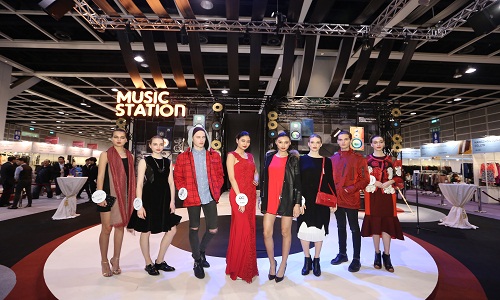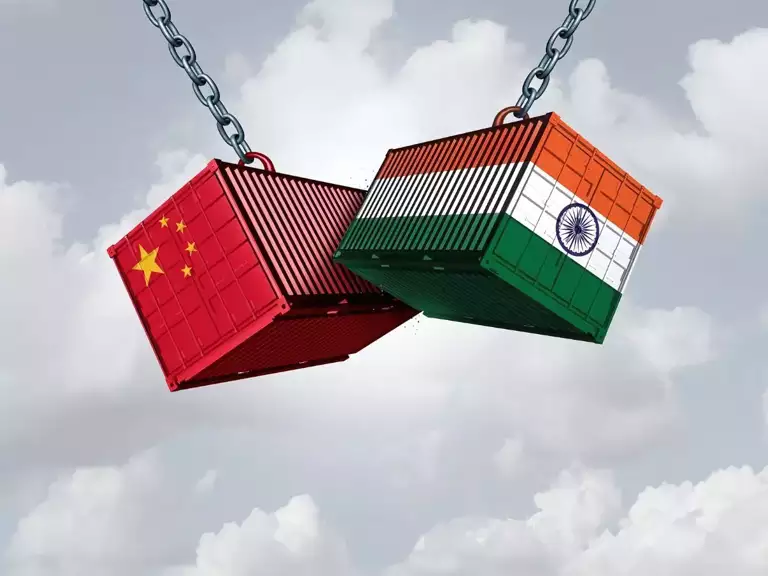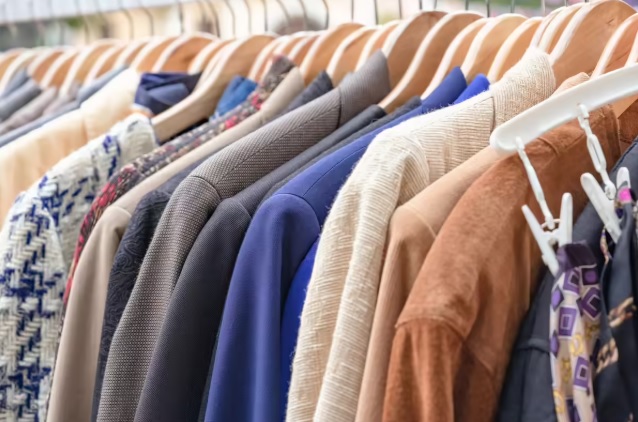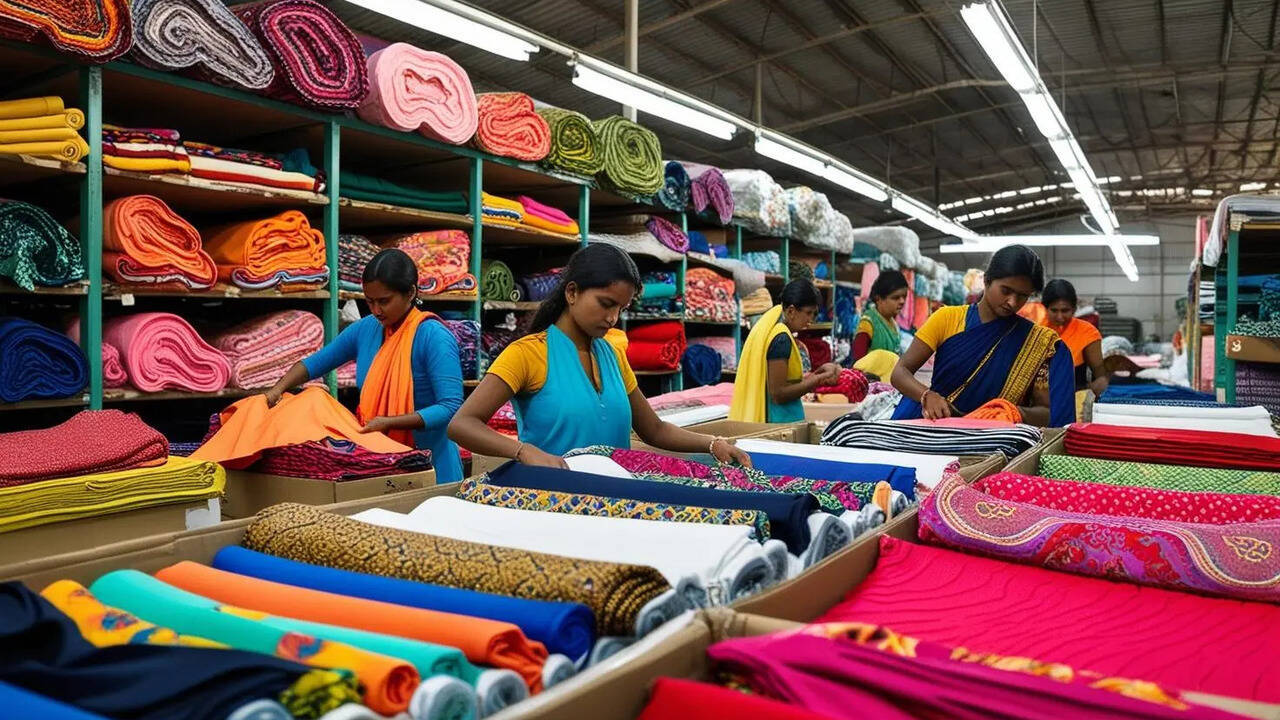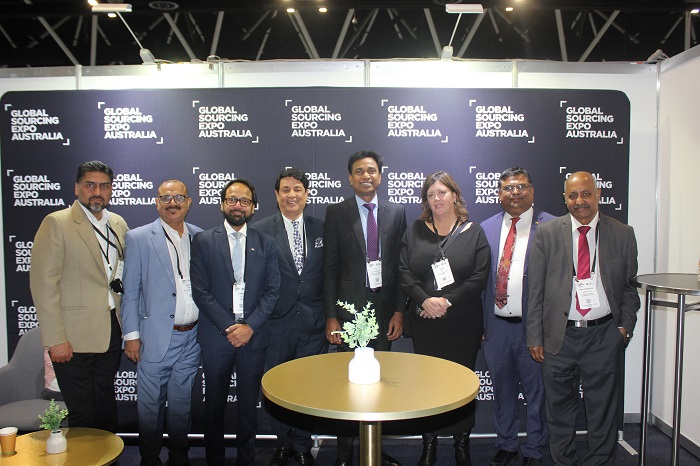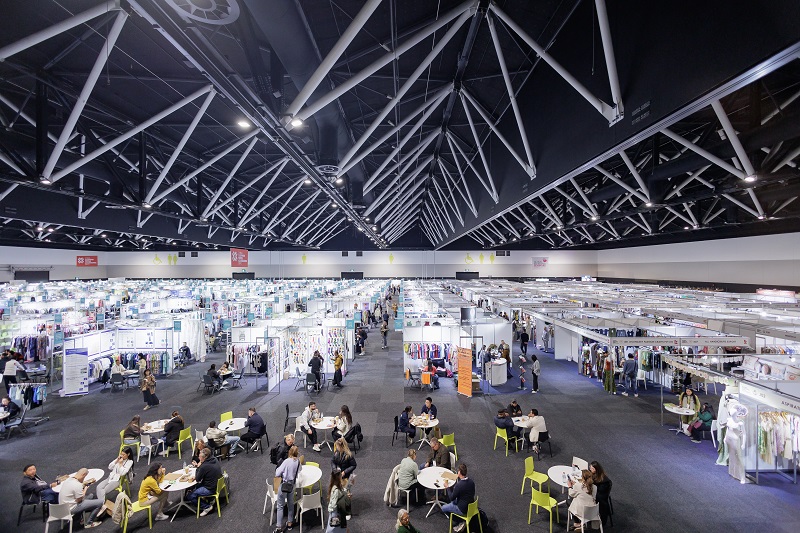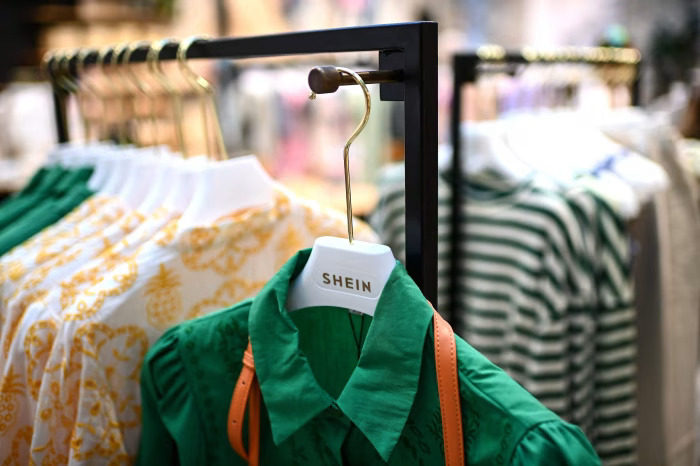FW
Textile firms in the US are willing to support the Trans Pacific Partnership. They feel the deal meets their key objectives. Under the negotiated terms Vietnamese cut-and-sew operations in most cases would have to buy yarn and fabric from the United States or other countries within the 12-nation free-trade zone the agreement would create. Currently, Vietnam gets most of its yarn and fabric from China, which is not included in TPP.
The 11 Pacific Rim countries are Australia, Brunei, Canada, Chile, Japan, Malaysia, Mexico, New Zealand, Peru, Singapore and Vietnam. TPP is a a trade agreement that will open markets, set high-standard trade rules, and address current issues in the global economy. By doing so, TPP will promote jobs and growth in the United States and across the Asia-Pacific region.
US textile and apparel manufacturers sold more than $10 billion worth of products to TPP countries in 2013, an increase of 5.4 per cent from the previous year. Many US yarns, fabrics, and apparel currently face tariffs as high as 20 per cent upon entering some TPP countries. The American goal in the TPP negotiations is to remove tariff and non-tariff barriers to textile and apparel exports to enhance the competitiveness of its producers in the Asia-Pacific region.
The European Union has banned nonylphenol ethoxylates (NPE), widely used in clothing, because they pose an unacceptable risk to the environment. The regulation will come into force from February 2016 and companies will then have five years to remove the chemical from their products and supply chains.
This means there should be no NPE in any textile placed in the market after February 2021 which can be reasonably expected to be washed in water during its normal lifecycle, in concentrations equal to or greater than 0.01 per cent by weight of that textile or of each part of the textile article.
The restriction will not apply to second-hand textile articles or new textile articles produced without the use of NPEs, but exclusively from recycled textiles. NPE degrades in the environment into substances, including nonylphenol , which accumulates in the bodies of fish and disrupts their hormones, harming fertility, growth and sexual development.
NPE is widely used in the textile industry. It was found in waste water discharge from two textile processing facilities in China supplying global apparel firms. The proposal to ban the chemical was brought forward by Sweden in 2013. NPE is used in textile production as wetting agents, detergents, and emulsifiers.
The Hub will be held in China, April 9 to 11, 2016. This is Asia’s premium invite-only urban focused street wear and denim fashion trade show. The Hub caters to premium brands and designers keen to expand into the Asia-Pacific market. Specifically the brands cover categories of men’s wear, women’s wear, footwear, accessories and lifestyle products. Carefully edited international brands are under one roof in a relaxed business-like environment. While some brands are long-time favorites with a dedicated fan base, others are emerging voices who have a unique design perspective.
Among the brands are: Aijek, Bleach Project, Boy London, Capitale Nord, Chrysalis, Dienastie, Flying Zacchinis, Fox Umbrellas, Jack Moran, JUMA, Luxe Deluxe, Node, Rack and Ruin, Spellbound, Swims, Tom Smarte and Zhang Chi. There are many interesting contacts and networking opportunities at The Hub. It’s a platform to open doors from small retailers to larger distributors.
Street and casual fashions are starting to take off now in China. Buyers attending are professionals and retailers. The event’s position also helps set the right vibe for presenting a new range. It is a strategic venue to negotiate and close deals and a single place to meet high-value customers.
www.thehub.hk/
"The 47th edition of the Hong Kong Fashion Week (HKFW) attracted more than 1,500 exhibitors from 22 countries and regions to showcase the latest international brands, clothing products, accessories and textiles. During the gala fair, around 30 spectacular events were organised, including more than 10 fashion shows and fashion parades as well as seminars on hot topics for the industry and networking events. The recently concluded 47th Hong Kong Fashion Week for Fall/Winter organized by the Hong Kong Trade Development Council (HKTDC), the fair (18-21 January) attracted nearly 18,000 buyers from 93 countries and regions."
The 47th edition of the Hong Kong Fashion Week (HKFW) attracted more than 1,500 exhibitors from 22 countries and regions to showcase the latest international brands, clothing products, accessories and textiles. During the gala fair, around 30 spectacular events were organised, including more than 10 fashion shows and fashion parades as well as seminars on hot topics for the industry and networking events. The recently concluded 47th Hong Kong Fashion Week for Fall/Winter organized by the Hong Kong Trade Development Council (HKTDC), the fair (18-21 January) attracted nearly 18,000 buyers from 93 countries and regions.
HK-based brands in focus
Benjamin Chau, HKTDC Deputy Executive Director believes the fashion industry faces many challenges with the European economy still recovering, slowing growth of the Chinese economy and unsatisfactory retail sales. “However, Hong Kong companies need not be pessimistic,” says Chau they should, instead, focus their attention on emerging markets and the ASEAN region. This season’s Hong Kong Fashion Week witnessed satisfactory increase in buyers from India, Malaysia, the Philippines, Thailand and Vietnam, indicating optimism among buyers from these countries.
For Hong Kong Fashion Week, the HKTDC organised 90 buying missions from 43 countries and regions. More than 5,000 buyers, including representatives from fashion brands, major chain stores, and distributors from ASEAN and other emerging markets, such as 23 from Malaysia, Zalora from Singapore, FashionSouq from the UAE and Dapper from Thailand participated in the fair, creating business opportunities for exhibitors.
Ryan Forbes, Marketing Manager, FashionSouq, said the market for women’s wear in the UAE was growing fast. He said he was considering purchasing men’s and women’s wear and fashion accessories for their online store. He had found five potential suppliers of beachwear, eveningwear, and accessories during the fair and planned to place small orders in early February. Forbes is from the emerging UAE market.
Lourdes R Mackay from Golden ABC, which has more than 600 stores across the Philippines and sells to Cambodia, Saudi Arabia, and Vietnam, said she was particularly happy with the ‘Men in Style’ zone at the fair. She said men’s wear had a huge and rapidly growing market in the Philippines, representing 70 per cent of Golden ABC’s business. Ms Mackay said they had found around 20 potential suppliers and would be finalising orders soon.
Hong Kong design welcomed by buyers
The Hong Kong Designer brand ‘Nude-MADE BY SUOI’ participated in the Designers’ Collection Show. Designer Thomas Kung said their women’s wear was known for its simplicity, and was currently selling in around 10 select shops in the mainland. During the fair, a buyer from mainland, who owns five shops in different mainland cities, showed a lot of interest in their brand. Kung believed that it would be a great chance for them to expand their market in the mainland.
Expanding brands in Asian market
HKFW featured a good number of brands, which regard the fair as a good platform to stage fashion shows and launched their latest collections. This included Taylor Shift’s eponymous brand, brought to Hong Kong by Hong Kong Brand Management Association.
Fortuna Tokyo showcased their nishijin-ori designs on the runway with the help of leading actors Kanta Sato, Rena Bisa, Shimon Okura and Tomori Atsuki from “Itazura na Kiss the movie” (Mischievous Kiss). The collection launched this time takes its theme from “Samurai”, primarily focusing on men’s wear.
The 47th edition of HKFW attracted more than 1,500 exhibitors from 22 countries and regions to showcase the latest international brands, clothing products, accessories and textiles. During the fair, around 30 spectacular events were organised, including more than 10 fashion shows and fashion parades as well as seminars on hot topics for the industry and networking events.
Textile Exchange (TE) and Organic Trade Association (OTA) recently signed a Memorandum of Understanding (MOU) to work together on legislative advocacy, public outreach and consumer education initiatives. The collaboration is to strengthen the North American organic textile industry’s public policy influence and public relations efforts.
The MoU was signed in conjunction with the recent formation of OTA’s Fiber Council, which was created to provide a cohesive voice across fiber categories within OTA and to grow the North American organic fiber sector overall.
US organic fiber sales were the fastest-growing non-food sector, reaching $1.1 billion in 2014, up 18 per cent from the previous year. The leading organic fiber is cotton. In 2014, U.S. growers planted organic cotton on 18,234 acres—the largest number of U.S. acres devoted to organic cotton since 1995, according to OTA’s 2015 Organic Industry Survey. Global sales of organic cotton products reached an estimated $15.7 billion in 2014, up 10 per cent from 2013, says Textile Exchange’s 2014 Organic Market Report.
The new partnership is aimed to boost outreach to North American consumers on the benefits of organic fiber and textiles, particularly the environmental and social benefits of growing and processing them. Much of the current demand for organic cotton currently comes from manufacturers and brands. With authenticity and transparency as key goals, brands are trying to position themselves to be responsible stewards —becoming more sustainable in their supply chains and more relevant in their core messaging.
Turkey will host a clothing and machinery fair from April 27 to 30, 2016. This is the prime trade show that showcases the manufacturing potential and latest technologies of leading machinery manufacturers. The fair is making a great contribution to clothing machinery companies to increase their competitive strength, reach target markets and create new business contacts with potential customers. During the last edition in 2014, Clothing Machinery Fair hosted 467 exhibitors and represented companies and 40,729 professional visitors from 67 countries.
Among the exhibits will be clothing sewing machines, embroidery machines, quilting machines, ironing machines and presses, laser cutting machines, digital printing machines and equipment, folding and packing machines, cleaning machines, quality control, measuring machines, storage and shelf systems, labeling and design printing systems, sewing and embroidery yarns.
Clothing machinery will include sewing and embroidery machines, quilting, bed and quilt machines, cutting machines, ironing machines and presses, laser cutting machines, digital printing machines and materials, folding and packing machines.
The visitor profile includes clothing firm representatives, quality experts, technicians, marketing and sales executives and other professionals. The fair holds the distinction of being the most successful commercial organisation in the Eurasia region since 1989. It is the meeting point of the clothing and the ready-to-wear sectors.
www.clothingmachineryfair.com/
Colombo Internation Yarn and Fabric Show (CIFS) will be held in Sri Lanka from March 10 to 12, 2016. The event will showcase products from the apparel and clothing, textile, fabrics and yarns, home furnishings and home textiles and business services industries. Textiles include suitings, shirtings, dress fabrics, made-up items and yarns of different varieties.
This will be a platform for factory professionals, manufacturers, exporters, importers and traders, trading companies, export houses, chambers and associations. About 200 exhibitors are expected. As Sri Lanka is a garment making hub in the Asean region, participation in the fair offers companies an opportunity to take full advantage of the growing Sri Lankan market in textiles and clothing.
The show will focus on visitors from the textile and garment area of Sri Lanka, a sector which accounts for over 70 per cent of the foreign exchange earnings of the country. Major investments in the textile and garment sectors are happening in Sri Lanka.
Sri Lanka imports 80 per cent of the yarn and fabric inputs needed for the apparel industry. At one time India was Lanka’s biggest supplier of cotton yarns and fabrics. Lanka’s textile and apparel sector exports mainly finished goods like garments.
At the recent Outdoor Retailer Winter Market (ORWM), the semi-annual industry-wide trade show held in Salt Lake City, knits took a more sophisticated turn, combining functional fibres with innovative constructions and elevated styling. At the ORWM , the socks were not only more colourful, but more technical as well. A winner of the Kokatat American Made Outdoor Gear Award at ORWM, knitter Farm-to-Feet™, which uses only US-grown wool, added a newly-developed 19.5µ merino to its line of 200 needle hosiery. The highly-engineered Damascus Elite hiking and hunting sock also featured micro-channel ventilation and LYCRA® comfort compression.
Lorpen North America’s TR2 crossover sock introduced a performance blend of PrimaLoft® fibre with merino wool. The same micro polyester fibre used in PrimaLoft® insulation is spun with merino wool to create a yarn that is soft, warm, and dry.
Hyosung’s introduced its latest comfort solution, Heat On™ polyester, at ORWM. The heat-generating fibre contains a proprietary mineral that absorbs solar energy and radiates it to warm the body. Unifi’s latest innovation, XS cross-section technology with dynamic tenability, was also developed with thermal comfort in mind. The fibre can be customised for a variety of attributes, including resiliency, thermal capacity, air and vapour permeability, bulk, and aesthetic effects.
The show witnessed a comeback of soft, stretchy, mid-layer fleeces made, after falling out of favour at the hands of lightweight insulated jackets and vests.
Fabstract Clothing, a Noida-based manufacturer of ladies knitwear since 1991 has recently added woven garments to its range. Fabstract Clothing, under the leadership of Nitin Batra has created a niche in the knitwear segment and is working with well-known labels in the US like Billabong, Urban Outfitters, Rip Curl, Quiksilver (Roxy), etc. and is also associated with buyers in Sweden, France, Canada and Italy.
The company with all in-house manufacturing facilities at its two factories in Noida, which have the facility for knitting, cutting, stitching, embroidery and finishing of garments, Fabstract is now geared to enter the woven business. Batra says, they added woven fabrics to their range and that is 5 per cent of their production capacity. Knitted garments takes 95 per cent of their business share as they specialize in knits and offer garments in all kinds of knitted fabrics including jersey, fancy fabrics, interlocks, prints etc.
Fabstract’s production capacity is around 80,000 to 90,000 pieces per month. However, it varies from style to style. The company’s major export destination is the US which accounts for 70 per cent of its exports and the rest 30 per cent goes to European markets. The product range includes women’s wear like dresses, tops, skirts, nightwear, etc. With a turnover of $4 million, the company is looking to grow at least by 10 per cent in financial year 2015-16.
With the rising prices of silk, many traditional weavers from Somasar village of Surendranagar, Gujarat are shifting from silk to cotton yarns. The traditional art of patola weaving has got a new life with the support of researchers at Vadodara’s M S University's Department of Clothing and Textile.
Silk is costly with each kilo costing anywhere between Rs 5,500 to Rs 6,000 - making it unaffordable to traditional weavers. Moreover, they have to procure resham from Bangalore. In contrast, cotton which costs nearly Rs 300 per kilo is not only cheap but also easily available and has good demand.
The problem arises when weavers started dyeing on cotton, the colours did not remain on the fabric for long and that's why they needed scientific help, according to traditional weavers from Somasar where the weaving community has a population of 3,000 of which 1,500 households are from Vaghela community. Presently about 30 households in Somasar are actively into weaving or allied trades.
The weavers got help from teachers and students of MSU and started preparing dupattas and dresses from cotton yarns. They will soon make shirts, cushion covers, curtains among others. This new technique has helped open new markets and attracted the attention of youth.
MSU’s objective was to train artisans in design development and value-addition. They applied a tool ‘Human Center Design’ developed by professor Wendy Weiss, a textile design expert from United States' and a Fulbright-Nehru Senior Research Scholar, MSU researchers developed a training program for Somassar artisans.



